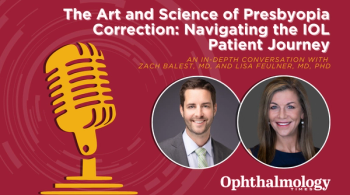
Refractive Cataract Surgery: Today’s presbyopes, what they expect, and how to satisfy them
Part 5 of 6
Refractive Cataract Surgery: Today’s presbyopes, what they expect, and how to satisfy them
Compared with previous generations, cataract patients today are more interested in having surgery sooner, when they first notice a change in vision, and in being able to see well at all distances without glasses. Sondra Black, OD, describes why optometrists should take on the role of counseling patients about presbyopia-correcting IOLs and provides some personal pearls.
Read the article now
Sponsored by:
Newsletter
Don’t miss out—get Ophthalmology Times updates on the latest clinical advancements and expert interviews, straight to your inbox.


















































.png)


